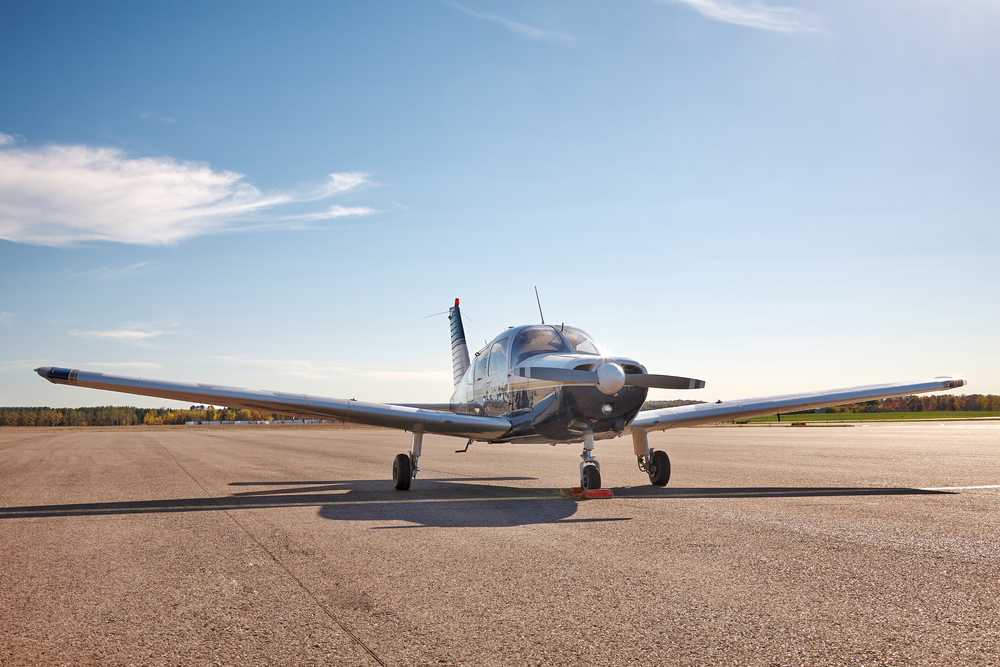Aviation fuel’s changing fast. Lead regulations and environmental concerns are pushing the industry toward unleaded avgas. Most piston planes still burn 100LL, but unleaded alternatives are gaining traction. Understanding what fuel your plane needs and what’s actually available keeps your engine running right and prevents expensive damage.
Quick Answer: 100LL (100 octane, low-lead) has tetraethyl lead that prevents detonation in high-compression engines. It’s dyed blue and available at most airports. Unleaded options include 94UL (94 octane), G100UL (100 octane), and future EAGLE fuels. Most engines designed before 1970 run fine on unleaded. Engines with compression ratios above 8.5:1 typically need 100 octane. Check your POH – wrong fuel causes detonation and engine damage. 100LL costs $5-$8/gallon, unleaded runs similar or slightly higher.
What’s in 100LL
100LL’s been aviation’s main fuel since the 1970s when 80/87 octane disappeared. The “100” means octane rating that prevents detonation in high-compression engines. “Low-lead” means 2 grams of lead per gallon (versus 4+ grams in the old 100/130 fuel). Lead prevents valve seat recession and provides lubrication. It’s dyed blue so you know what you’re pumping.
Works in all certified aircraft engines flying today. Most engines don’t actually need the full 100 octane – they just use what’s available. 100LL’s got about 50% more energy per gallon than car gas. Specific gravity’s around 6 pounds per gallon. Stays stable for months in sealed tanks. Downside? Lead deposits build up on spark plugs and in oil, so you’re cleaning plugs and changing oil more often.
The Lead Problem
Aviation’s the largest remaining use of leaded fuel in the U.S. EPA and environmental groups want it gone. Lead from aircraft exhaust affects communities near airports, especially kids. FAA’s mandated unleaded alternatives by 2030. That deadline’s pushing development hard.
But eliminating lead’s complicated. Many high-performance engines need 100 octane to prevent detonation. Just removing lead from current fuel drops octane to 91-94, which isn’t enough for high-compression engines. Developing unleaded fuel that hits 100 octane requires completely different chemical formulations. The whole distribution system has to adapt. This stuff takes years and serious money.
94UL – The First Option
94UL (94 octane unleaded) has been around since 2010 but at limited airports. Works in engines with compression ratios below 8.5:1 – that’s about 65% of the piston fleet. Most engines from the 1960s and earlier handle 94UL perfectly. No lead means less plug fouling and cleaner oil. It’s clear or slightly colored.
Benefits? Reduced maintenance (fewer plug cleanings), cleaner oil, environmentally friendly. Costs about the same as 100LL. Problem’s availability – it’s only at certain airports. Makes cross-country flying complicated when you don’t know if you can get fuel. High-performance planes like Bonanzas, Mooneys, 210s with turbochargers or high-compression engines can’t use 94UL – they need 100 octane minimum.
G100UL – The Real Solution
GAMI (General Aviation Modifications Inc.) developed G100UL, an unleaded fuel hitting 100 octane. FAA approved it as a fleet-wide replacement for 100LL in 2022. Works in all aircraft currently using 100LL without any mods. No lead while providing 100+ octane through different chemical compounds.
G100UL costs a bit more to produce – expect $0.50-$1.00 per gallon premium. Prevents valve seat recession through different lubrication additives. Testing shows it burns cleaner with less deposits. But distribution infrastructure’s just starting. Few airports have it now. Widespread availability’ll take years of infrastructure investment. This is probably the long-term replacement for 100LL.
EAGLE and What’s Coming
FAA’s EAGLE (Eliminate Aviation Gasoline Lead Emissions) initiative coordinates industry efforts on unleaded alternatives. Multiple companies testing formulations – Swift Fuels, Shell, others have candidates in various testing stages. Goal’s FAA approval and widespread distribution by 2030.
These fuels must meet tough requirements: 100 octane minimum, compatible with existing engines and fuel systems, stable storage, reasonable cost. Testing includes lab analysis, engine testing, flight trials. Approval process’s lengthy – fuel must prove safe across the entire GA fleet. Multiple fuels might emerge serving different segments: high-compression engines, moderate-compression, low-compression.
What Your Engine Needs
Check your POH under “Fuel Requirements.” It’ll specify minimum octane rating. Engines needing 91 octane or less can safely use 94UL. Engines requiring 100 octane must use 100LL or approved 100-octane unleaded like G100UL. Never use lower octane than specified – detonation damages pistons, cylinders, valves.
Compression ratio tells you fuel needs. Below 8.5:1 typically handles 94UL. Above 8.5:1 needs 100 octane. Continental O-200s, Lycoming O-320s, similar engines work fine on 94UL. Continental IO-520s, Lycoming IO-540s, turbocharged engines need 100 octane. When in doubt, ask your mechanic or engine manufacturer. Wrong fuel voids warranties and creates safety hazards.
Making the Switch
If your engine tolerates unleaded, the transition’s straightforward. Drain tanks and switch to unleaded – no mods needed. Monitor engine operation for the first few flights. Listen for detonation (audible knock under power). If you hear detonation, switch back to 100LL immediately and talk to your mechanic. Most engines run better on unleaded with less maintenance.
Engines that’ve been running 100LL might need spark plug service when switching to unleaded. Lead deposits accumulated over years can release when exposed to unleaded. Change oil after 10-20 hours on unleaded to remove dissolved lead. After initial cleaning, unleaded operation should be maintenance-free. Valve seat wear concerns? Proven unfounded – most engines show no accelerated wear on unleaded.
Real-World Considerations
Availability drives fuel decisions. If your airport offers 94UL and your engine handles it, switching reduces costs and environmental impact. If 94UL isn’t available locally, cross-country planning gets complicated. You might need to carry enough fuel to skip unleaded-only airports. Call ahead to confirm fuel availability at unfamiliar airports.
Cost differences between 100LL and unleaded vary by location. Some airports price 94UL lower than 100LL, others charge similar rates. G100UL’ll likely be premium priced initially due to limited production. Long-term, unleaded fuels should cost less as production scales and distribution develops. Track your engine’s performance on different fuels – some pilots report better operation on unleaded, others notice no difference. The transition to unleaded’s inevitable – understanding your options prepares you for aviation’s evolution toward lead-free flying.
Join the Aircraft Insider Community
Get exclusive backcountry flying tips, aircraft reviews, and Western aviation destinations delivered to your inbox.
✈️ No spam, ever. Unsubscribe anytime. Privacy respected.




Leave a Reply